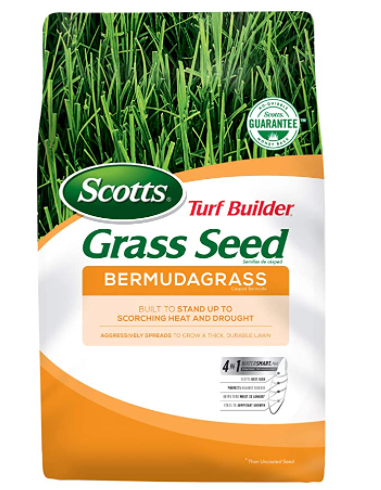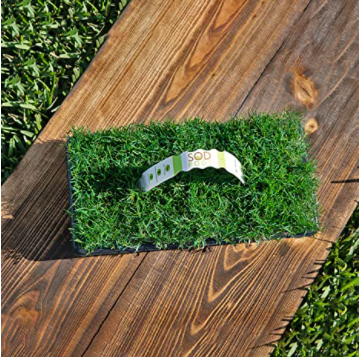A perennial warm-season turfgrass, Bermuda grass is a popular landscaping item, widely used as both pasture and lawn. It’s incredibly resilient, tolerating even dry conditions. Bermuda’s deep roots that extend underground not only keep it hydrated during drought but also support its regeneration process.
While some homeowners appreciate the turf’s resilience, toughness, and adaptability, others disdain it for its invasive nature.
Below are a few things you may want to consider before growing Bermudagrass (Cynodon dactylon) in your yard:
Is Bermuda Grass a Good Lawn? Know the Pros.
Here are good reasons why you would plant Bermuda seeds, according to Clemson University’s Cooperative Extension Center.
1 – Fast growth
Under ideal conditions, Bermuda turf grows and spreads super fast via stolons or runners.
This is obviously good news if it establishes in the designated growing area. If not, you want to wholly uproot it at the earliest opportunity. Consider blending your Bermuda grass with other seeds for creative and unique results.
2 – Chokes out weeds
If properly maintained, Bermuda grass grows to a dense turf layer, which is highly effective in countering and choking out weeds.
3 – Heat and drought resistant
Like other grass types, Bermudagrass thrives when adequately hydrated. However, it still can survive dry weather, courtesy of its extensive deep roots. Grown in an open area with plenty of sunlight, this grass can withstand attacks from pests and any other growth-related issues.
4 – Disease-resistant
It may not be resistant to all diseases, but its roots and leaves rarely get afflicted by diseases. Bermuda grass is also tolerant of salinity and adapts well to lawns near the sea or ocean.

What Is Wrong With Planting Bermuda Grass?
Here are some disadvantages or cons of Bermuda grass.
1 – Aggressive growing lawn
Bermuda grass grows aggressively from its aboveground and below-the-ground stems, quickly invading flower beds around and the landscape. This fact that you’ll have to mow the turf frequently to keep it at a manageable length.
The rapid growth may also encourage thatch build-up, leading to thin diseased turf. However, it’s worth noting that even though Bermuda grass and other grass types like zoysia often develop thatch layers quickly, they seldom die suddenly—owing to their heat and drought tolerance ability.
2 – Does not grow well in the shade
Generally, Bermuda grass thrives in full sun and will tend to thin in shady spots. But some of its cultivars have been scientifically bred to tolerate shade.
A good example is TifGrand, the most shade-tolerant of all the bermudagrass varieties. It can withstand up to fifty percent shade.
3 – Not resilient to foot traffic
It’s not highly tolerant of foot traffic but heals very fast from damage.
4 – Goes dormant in the fall and winter
Bermuda grass ceases active growth when temperatures drop to protect itself from dying off. And while this may be beneficial to the plant, lawn owners may find the color-fade dissatisfying as the grass turns brown.

FAQs About Bermuda Grass
In addition to the “pros,” we rounded up some of the most asked questions you might have about this grass species.
What is the best climate to grow Bermuda seeds?
Bermuda seeds will germinate well with an optimum soil temperature of between 75-85°F. But generally, this turf thrives in a warm, moist climate—where it can be grown all year round.
How do you plant Bermuda grass?
Bermuda grass can be grown from seeds, sods, or plugs. Here are some hints to help you grow this species:
- Before planting, ensure the site is well prepared, raked, and remember to work in humus, at least 6 inches, to help give the turf a good start.
- Spread the seeds by hand or using a broadcast seeder, then cover lightly with a thin layer of soil—about ¼ inch deep—using a rake.
- Water immediately after planting, then regularly until the turf establishes.
- Consider fertilizing with a complete turf-grade fertilizer (N-P-K) with a 4-1-2 or 3-1-2 ratio. Simply sprinkle it over the lawn.
- Note: Your fertilizer should be nitrogen-high, with little or no phosphorous; may include potassium in small amounts.
- Under ideal conditions, your Bermuda grass should take between seven to fourteen days to germinate.
How do you take care of Bermudagrass?
Care is vital in ensuring a beautiful and healthy Bermuda grass lawn.
- Watering: Irrigate deeply once per week or as needed depending on where you reside.
- Mowing: Trim the turf frequently, taking care not to cut more than a third of the turf blades at a time. Using a sharp mower blade, always maintain a 1-1.5 inches height.
- Aerating: Aerate your Bermuda grass once or twice every year in early summer or late spring to encourage healthy growth.
- Fertilizing: Do a soil test before feeding your turf to establish the lacking nutrients and know what type of fertilizer to use. Based on your soil analysis results, fertilize two to four times a year, from March to November.
- Control the weeds: Keep your lawn free of weeds that would compete for nourishment and water with your turfgrass.
Is Bermuda grass easy to grow?
Yes, as long as you reside in the turf’s suitable growing climate. Bermuda grass grows best in sub-tropical climates like South America, Africa, Southern United States, India, and Australia. You may want to invest in one of the cold-hardy varieties if you reside in chilly climates.
Does Bermuda grass require a lot of water?
Unlike other species, Bermuda grass doesn’t require as much water, though it will still benefit from irrigation. In the summer, offer the grass, at the minimum, 1.25 inches of water a week, making sure to irrigate for between two and four hours every third day unless there be a rain forecast.
Only water in the fall and spring when unexpected hot, dry weather occurs or if the turf is curling and wilting.
Where does Bermuda grass grow?
Bermuda grass grows in locations with an average annual temperature range of between 6-280C, though it does best where daily temperatures range between 17-350C. It prefers well-drained soils with a 5.8-7.5 pH value.
How long does it take for Bermuda grass to establish?
Your seeds will take an average of seven to fourteen days to germinate, then another approximately six weeks to spread, forming a fully established turf.
Is Bermuda grass aggressive?
Yes, this grass species is highly aggressive and can easily take over your yard if left uncontrolled.
How often should I cut Bermuda grass?
Mowing frequency greatly depends on the age of your turfgrass, and may as well be altered by the seasons.
For a recently established lawn (not yet mowed), consider delaying until the near-end of winter to execute the first mowing, mainly to help eliminate the unattractive grass blades that didn’t survive the cold season.
You should do a second mowing in early to mid-spring when the lawn turns green. Subsequent mowing frequency (after the two initial sessions) will depend on the mowing height of the second trim. That’s usually about once a week.
How do I encourage Bermuda grass to grow?
In addition to fertilizing, frequently mow at the ideal length. This will stimulate vertical growth, leading to a healthier and denser turf.
How do I make Bermuda thicker and greener?
Simply offer a slow-release nitrogen fertilizer feed and water once a week. This will help improve the growth rate plus enhance the turf’s green tone.
Mow slightly lower to encourage lateral growth, therefore, ensuring a fuller, thicker lawn. Consider controlling weeds in early spring and dethatch during the turf’s active growing season. If you notice signs of thinning, you can always overseed to cover the bare spots. Overseeding Bermudagrass also helps ensure that the lawn stays green throughout the season.
Tip: Overseed with cool-season turfgrass if the lawn turns brown when it goes dormant in the winter months.
Alternatively, if you’re willing to wait out the dormancy period until spring to begin enjoying a greener lawn, then simply overseed with Bermuda grass seeds.

The Takeaway: Easy-Care Bermuda Grass Thrives in Moderate and Warm Climates
The first thing with Bermuda grass growing is to plant it within the ideal growing conditions. Maintain regularly by offering the above-outlined care needs, in addition to frequent mowing. Consider blending the turfgrass with other seeds for a more creative and unique lawn appearance.



